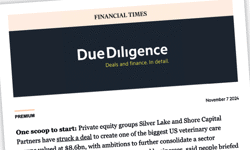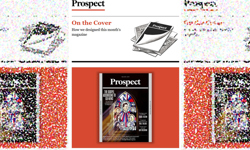
The magic of newsletters is in their ability to do so many things, often at the same time. It is the most versatile of products: a possible solution whether you are searching for a tool to create habits, enhance the value of a subscription or to reinforce retention. Your purpose may be increased traffic to the site, encouraging registrations or building up a personality to become a brand – all these are perfect newsletter ambitions. Plus, newsletters can make a lot of money – in sponsorship, promoting events and advertising. They really are remarkable.
That is why newsrooms across the world are investing so much in such a simple product. Emails are not cutting edge or particularly innovative, but they are perfect for a world increasingly focused on subscriptions, registrations and membership. Everyone wants to connect with readers and newsletters have been experiencing something of a renaissance lately.
They are perfect for a world increasingly focused on subscriptions, registrations and membership.
Impact of Substack
Much of this has been connected to the rise of Substack (and more recently, since its purchase by Twitter, Revue) and the rise of personality newsletters. Many big names have left media companies to set up successful newsletters. Bari Weiss, for example, previously of the New York Times, has over 100,000 subscribers to her Common Sense newsletter and now employs other journalists to help write it. Meanwhile, Graydon Carter’s AirMail newsletter is also expanding. Axios reported that its subscription numbers grew more than 50 per cent year-on-year.
However, writing a newsletter is time consuming (if people are paying, then you need to provide excellent, original content) and can be relentless. It is tricky to take time off, especially if the newsletter is built around your own persona, and also challenging to build up lists.
All this may help to explain why some newsletter writers have been tempted back to bigger media organisations. Last autumn, The Atlantic announced that it was to launch nine subscriber-only newsletters – brought in from Substack. All existing subscribers (paid or unpaid) were given a year-long digital subscription to The Atlantic.
The intention was to help The Atlantic enhance its subscription proposition, while also encourage the Substack readers to (eventually) pay for an Atlantic sub. At the same time, it will have helped the newsletter writers themselves, not just with editorial support, but also promotion. When he wrote about leaving Substack for The Atlantic, Charlie Warzel revealed that he had just 1,600 paying subscribers.
Traffic is part of engagement, but it’s not our priority for newsletters. That is building relationships with readers.
Toby Moses
Subs-only newsletters
Subscription-only newsletters are not new (almost all FT newsletters are paywalled, and they are our number one tool for retention), but the current emphasis on them is very reflective of the 2020s. The Atlantic newsletter strategy is intriguing, but it is not a million miles away from last year’s decision by the New York Times to put a large proportion of its existing newsletters – and some new ones – behind a paywall.
The aim, of course, was two-fold: to make a New York Times subscription more appealing, so stopping churn, and to hope that some people would now take out a subscription in order to read their newsletter of choice.
Newsletters have definitely moved on from being seen solely as vehicles to drive traffic, or rewards for registration, although these aspects are still relevant. Forbes announced its own newsletter platform in January 2021, and Axios has just launched its “Pro” series of paid for daily newsletters.
Perhaps 2022 and 2023 will see more big publishers bringing existing, successful newsletter writers into the fold. One of the main benefits for the reader, of course, is that one newspaper subscription grants access to all of its newsletters. With Substack (which has recently added a podcast feature and is now trialling video too), Revue or Ghost, you have to keep paying individual subs, which can mount up.
Expect newsletters on anything from cryptocurrency to biscuit recipes to come your way this year.
Free newsletters
But subscription-only newsletters, often long and filled with bespoke content, are not the only direction of travel. There will always be a place for shorter, carefully curated emails, while the registrant newsletter is very much here to stay. Newsletters can be shop windows for content – it is wise to let readers see that.
All newsletters are free at The Guardian, which has no paywall. However, it does invite people to contribute or become members voluntarily, and engaged readers are more likely to do so.
“Engaged readers are more likely to support us financially,” explains Toby Moses, head of newsletters. “Newsletters help to build that relationship and enable the supporter base to grow. Traffic is part of engagement, but it’s not our priority for newsletters. That is building relationships with readers.”
Keeping newsletters free, but using them to communicate with readers and as a vehicle for registration is a strong focus for Reach, Britain’s biggest commercial publisher. When they focused on acquiring registrants for their suite of national and regional newspapers, they realised communicating with them was crucial.
“The single best way,” says Martin Little, audience transformation director, “was through the inbox”.
Little says newsletters are “the key relationship tool” that the company has with its audience. “It’s a direct link,” he adds. “It means we can write to them in a meaningful way and they will stay active and engaged. It’s about getting close to our readers, especially with the regional brands.”
For the last decade, there has been a push towards personalisation in newsletters, as well as more personality-driven products.
Dan Oshinsky
Regional appeal
Focusing on localities is also something we are seeing more of, whether on an individual level (Joshi Hermann’s The Mill, in Manchester, is making waves and has had investment from Substack) or on a wider basis, as with Axios Local, which is expanding into eleven new US cities this year. Revenue is focused around sponsorship and the newsletters are seen to fulfil a purpose geographically.
Reach have just announced that they are being funded by the Google Digital News Initiative to create twelve new jobs launching local email newsletters. These will be part of an “Email Innovation Lab”.
As the regional emphasis demonstrates, newsletters have always been good for fulfilling a niche and that looks likely to continue. Expect newsletters on anything from cryptocurrency to biscuit recipes to come your way this year. Getting them out there, however, requires some help, and one advance here was the acquisition of Revue by Twitter. Integrating the newsletter platform within the social media platform has been impressive and I would expect this to develop, possibly to the detriment of big publishers who use their own CMS (which may not integrate happily with social media). Meta, of course, already has its Bulletin service, which is slowly adding writers to the platform.
Everyone wants to increase the list size of their newsletter, but this must be about engaged readers.
Personality
Personality has been the newsletter buzzword recently, while there has also been a push for personalisation. It is a difficult call – many readers enjoy the curated “feel” of a newsletter – but there is evidence to suggest that some kind of personalised content may be more effective.
Dan Oshinsky, former head of newsletters for both Buzzfeed and The New Yorker, runs his own consultancy, Inbox Collective. He thinks 2022 might be when we find a middle ground between personality and personalisation.
“I think it might be the case of using a little bit of personalisation to make something really special,” he tells me. “For the last decade, there has been a push towards personalisation in newsletters, as well as more personality-driven products. Perhaps the answer is smaller things to make newsletters more useful and personal, while also bringing in voice and personality.”
Newsletters all start from the same point – as content sent via email. But from there, they can differ enormously. There are huge opportunities within the content and design of each newsletter, albeit within constraints: video is generally not included because it would take so long to download. It’ll be interesting to see whether design becomes more exciting (like The Lily at the Washington Post, set up very much with its “look” in mind), or even simpler and stripped back (the so-called “smart brevity” of Axios).
Any good newsletter writer should value regular interaction with readers.
Quality vs quantity
Everyone wants to increase the list size of their newsletter, but this must be about engaged readers. It is surely time for commercial teams to recognise that a smaller list of engaged readers is more valuable than a huge list (often auto-enrolled) with an embarrassingly small open rate. Re-engagement campaigns and regular list culls are all sensible parts of a newsletter strategy, as are different ways to engage, whether that is including a writer’s email address in each newsletter, or adding polls or surveys. Any good newsletter writer should value regular interaction with readers and every editorial newsletter strategist should be keen to build on the sense of community newsletters can provide. You should value every qualitative data point that you have.
I am also keen to emphasise that writing a newsletter is a real skill: it is not simply sending a column via email. Similarly, trying to get people to click through to a website means using language to entice them to do just that. All this requires careful thinking about several issues, from the words you use, to what you decide to hyperlink. Perhaps the industry should be taking more care to employ people who specialise in newsletters as a genre.
Finally, it’s interesting to look at whether a newsletter can help with another huge issue publishers are grappling with: how to attract younger generations. Although email may not be the most obvious solution (Tik Tok might be better), some have seen success, and others are trying to be innovative.
The Washington Post recently launched The 7, which offers a short, sharp round-up via newsletter, app, or audio, while Yahoo created The Yodel to target Gen Z with daily news blending information, humour and a touch of irreverence. The subscriber base increased eightfold in a year.
When it comes to newsletters, there are always ways to improve. Publishers should be aware of their competitors, but not think that there is only one way to put together a good product. “Smart brevity” may be perfect for one audience, and 2,000 words of exclusive copy for another. I would caution against constantly launching new products without optimising those that already exist, and would tell any newsletter executive to be prepared to ask questions before agreeing to something new. Keep an eye on the metrics, and do not become obsessed by the size of the list. Newsletters are wonderful, and can do so much. We just need to use them properly.
Publishers should be aware of their competitors, but not think that there is only one way to put together a good product.
This article was first published in InPublishing magazine. If you would like to be added to the free mailing list, please register here.










